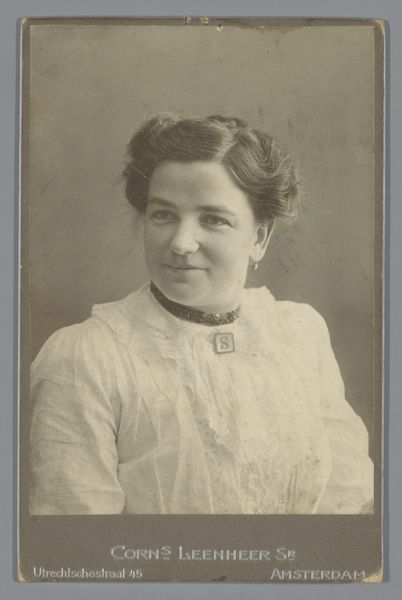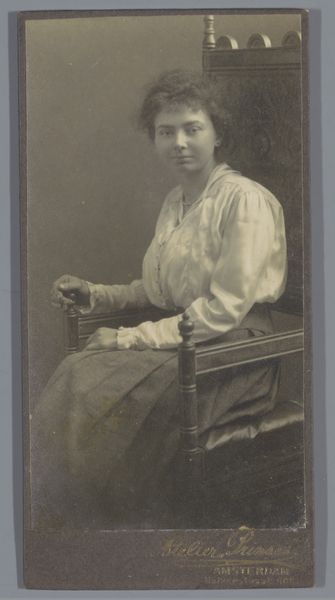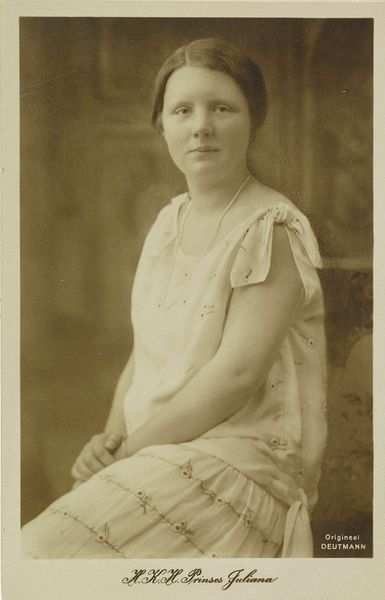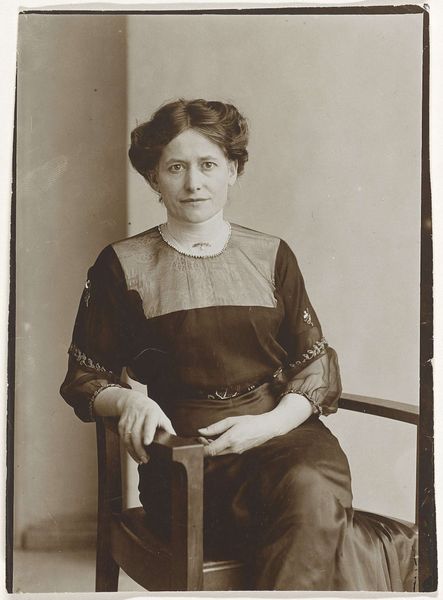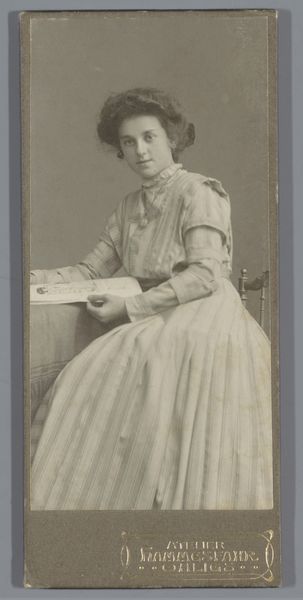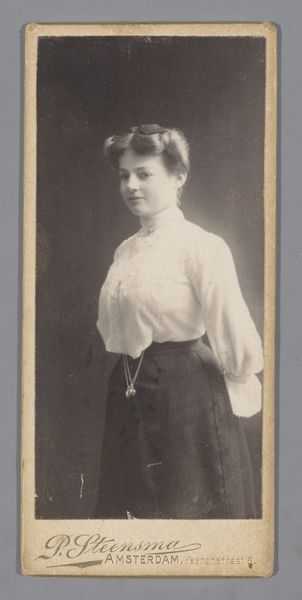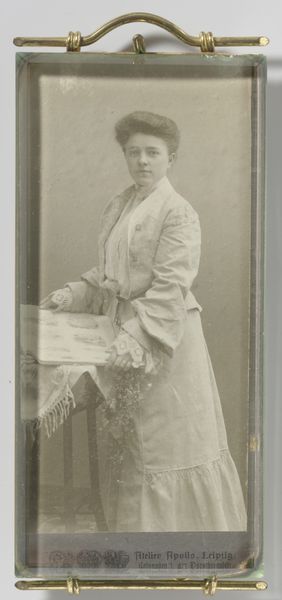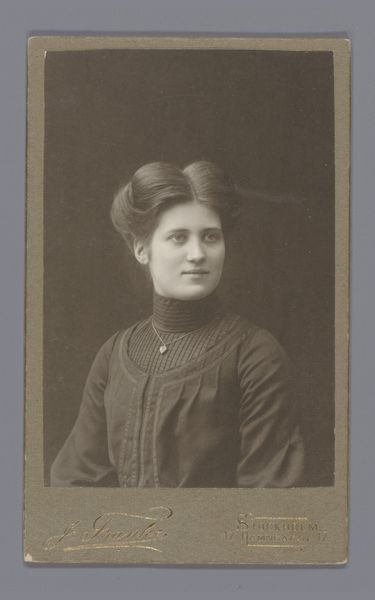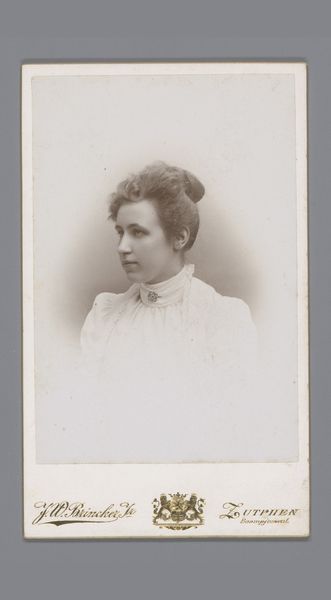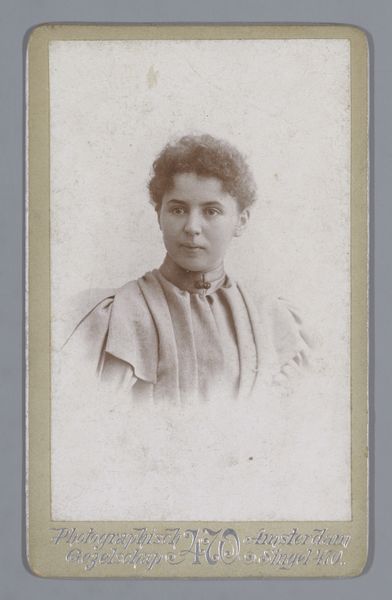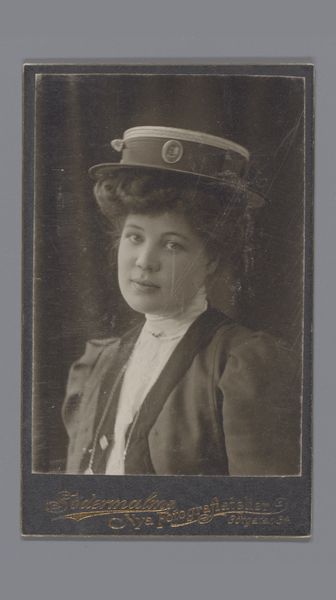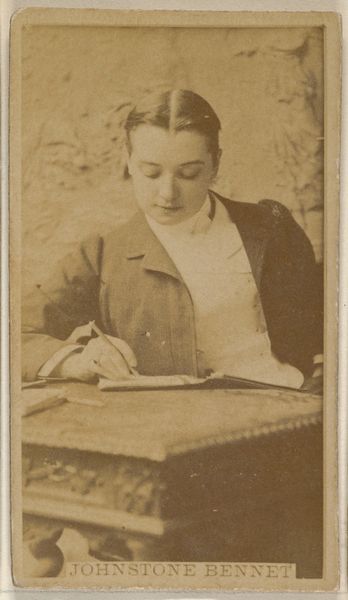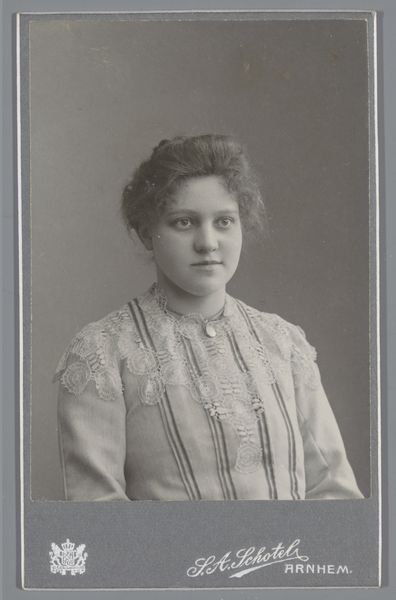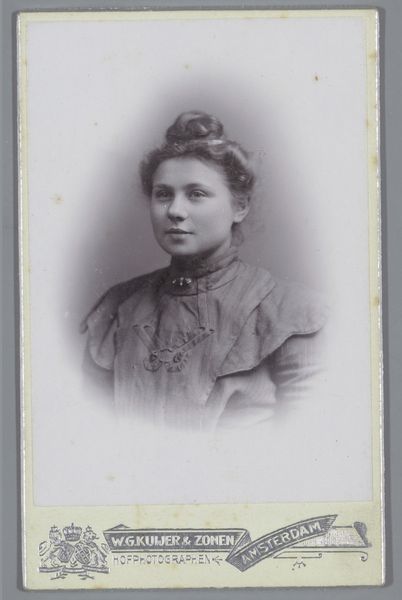
paper, photography
#
portrait
#
portrait image
#
pictorialism
#
paper
#
photography
#
historical photography
#
academic-art
#
fine art portrait
#
realism
#
poster
Dimensions: height 129 mm, width 64 mm
Copyright: Rijks Museum: Open Domain
Curator: The mood of this photograph strikes me immediately. There’s a quiet confidence, perhaps even a hint of intellectual challenge in her gaze. Editor: This is a photographic portrait, made on paper, sometime between 1900 and 1914 by Willy Frohsinn. The title translates to "Portrait of an Unknown Woman," which, given the time period, immediately invites questions about class, access to photographic portraiture, and the social construction of female identity. Curator: Precisely! The “unknown woman” is precisely the point, isn't it? Her identity, seemingly obscured, compels us to question whose stories are told and whose remain invisible within historical narratives. Her dress and setting point toward middle class status, but even that’s a construct within a photograph like this, designed to portray respectability and perhaps a degree of aspiration. Editor: Indeed. Studios like Frohsinn's played a critical role in shaping public perception during that period. This image exists at the intersection of private identity and public performance. How did the sitter want to be seen, and how did the photographer help to shape that vision? It's also fascinating how photographic realism in this period engaged with Academic Art's focus on faithful representation. Curator: The opened book suggests an engagement with knowledge, maybe even art itself if you consider the date. It invites questions about women’s roles in early 20th-century intellectual and cultural life. I’d be interested to analyze the visual rhetoric deployed to construct the subject as someone both intelligent and feminine. Is the book a tool of empowerment, or a prop? And what can that tell us about the role of gender in defining selfhood at the turn of the century? Editor: That open book speaks volumes, literally. It's also important to remember how portraits such as this would circulate. Consider the potential viewers, the photographer's intention in offering these types of images, and the subtle ways in which socio-political ideas were transmitted and reinforced. Curator: This image is an entry point to a conversation about representation. It can help visitors explore gender roles, class structures, and even the very act of image-making within that era. Editor: Absolutely. It serves as a tangible reminder of the complex web of social forces that shape both the creation and reception of art.
Comments
No comments
Be the first to comment and join the conversation on the ultimate creative platform.
